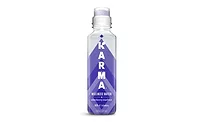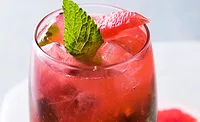Ingredient Spotlight
Botanicals a boon for beverage
Botanicals’ flavor, function enhances beverages

With usage across a variety of categories, botanicals are making a splash in today’s beverage market. Both for functional benefits and flavorful properties, botanical applications are on the rise, meeting consumers’ demand for healthier, unique, premium options when it comes to beverages’ taste and wellness traits.
“Consumers are looking for beverages that not only taste great but provide added functionality,” says Amanda Wolff, marketing manager for Beloit, Wis.-based Kerry North America. “We see everything from kombucha for gut health, to protein waters, and spirits with botanicals leveraging the ‘health halo’ trend.”
Renata Ibarra, research, development and applications senior beverage director at Kerry, says interest in botanical ingredients has spread worldwide, especially in non-alcohol beverages, where there has been a focus on functional botanical extracts.
“Botanical ingredients such as rice, beans and kelp might be used for health properties, then combined with other botanical extracts for taste,” she explains. “Juniper is popular, especially in combination with bitters. Rose is in demand as well with its floral notes and traction with lemonades, hops and hop waters. We’re even seeing combinations of citrus and fruit juices with botanicals, such as grapefruit with juniper or citrus with cardamom.”
Ibarra notes botanicals such as chamomile, mint, white tea and rooibos are showing up in iced teas and tea drinks. Coffee, too, is getting a botanical boost.
“The latte space is one place in which botanical ingredients are being explored,” she says. “Some of the popular botanicals amongst baristas and — perhaps, someday, in ready-to-drink (RTD) coffees — are lavender, turmeric and ginger.”
Getting “buzzy” with botanicals
When it comes to beverage alcohol, botanicals have become a boon across categories.
“Although gin is typically made of a botanical blend including juniper, citrus and some roots and spices, we are seeing requests for other botanical ingredients such as bergamot, flower blossom, cherry blossom, yuzu fruit and various types of teas, as well as wormwood, gentian, cinchona and quassia,” Kerry’s Ibarra says. “In Northern Europe, these botanical blends are being mixed with licorice and aniseed.”
Botanicals such as cannabis-inspired terpenes and terpene flavors also are gaining popularity. Terpenes, according to Northbrook, Ill.-based Bell Flavors & Fragrances, are aromatic oils found in natural botanical sources with therapeutic benefits, such as cannabis and hops.
The company recently launched a line of cannabis-inspired terpene flavors and fragrances, which — although not derived from the cannabis plant or contain active ingredients such as CBD or THC — were designed to recreate the flavor and aroma of familiar terpenes such as linalool and limonene, and cannabis strains blackberry kush, blue dream and pineapple express.
Utilizing familiar terpenes in its portfolio, Mass Bay Brewing Co., Ipswich, Mass., brews its Clown Shoes IPAs with terpenes linalool and beta-pinene that enhance floral and pine notes, and supplement sweet, citrusy hops, the company says.
Experts note that cannabis infusions could elevate the uses of terpenes within new product development.
“With the advent of cannabis beverages, expect to see more use of black pepper and other ingredients that have terpenes, or of the isolated terpenes themselves,” says Roger Dilworth, senior analyst for Beverage Marketing Corporation (BMC), New York. “Turmeric is said to require black pepper for bioavailability, while mango may enhance the effects of terpene-containing cannabis. Marketers of the future will be challenged to experiment with fruits, terpenes, adaptogens and flowers to create flavorful, distinctive beverages.”
On the horizon for botanicals
Whether it’s in beverages or beyond, data suggests the demand for botanicals will continue to rise. According to New York-based Market Watch, the global botanical extracts market is projected to reach $7.59 billion by 2025, growing at a compound annual growth rate (CAGR) of 8.7 percent between 2017 and 2025. Additionally, the market for foods and beverages that contain botanicals is projected to be valued at more than $1.4 billion by 2025, growing at a CAGR of around 3.2 percent between 2019 and 2025, according to Zion Research, New York.
Randal Kreienbrink, vice president of marketing for Martin Bauer Group US, Secaucus N.J., says that in regards to the pandemic’s impact on botanicals, their immune-health benefits have elevated the ingredient group’s status.
“I’ve seen a boost in application of botanicals such as echinacea, acerola, white willow bark, elderberry, elderflower, goldenseal, green tea, hibiscus, apple cider vinegar and rose hips,” he says. “Along with function, some botanicals add desired flavors as well to the beverage.”
Supporting the immune-boosting trend, FutureCeuticals offers its botanical-based Spectra, which features a blend of 29 fruits, vegetables, and herbs including elderberry, acerola, camu camu, mangosteen, turmeric, green tea, acai, blueberry, broccoli and kale. According to the company’s website, there are five major types of free radicals within the body, and their studies show Spectra targets all five, making it a complete, full-spectrum antioxidant formula, the Momence, Ill.-based ingredient company says.
Beyond immune health support, experts note that botanicals offer the potential to tap into numerous functional beverage trends.
“Concurrent trends are increased energy, plant-based proteins, plant-based fiber, upcycled botanicals, and calming or relaxing botanicals,” Martin Bauer’s Kreienbrink says. “Regardless, the immune trend is here to stay for a while.”
Looking for a reprint of this article?
From high-res PDFs to custom plaques, order your copy today!







